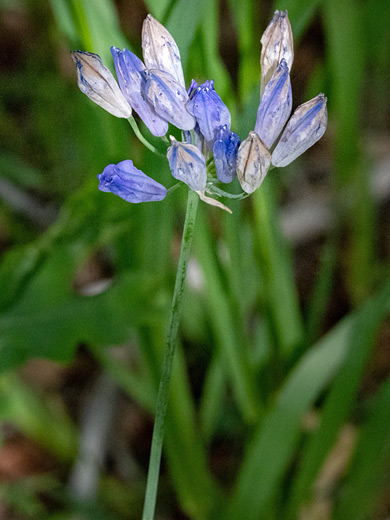Triteleia Grandiflora, Largeflower Triteleia
Plants > Wildflowers > Asparagaceae > Triteleia Grandiflora
Common names:
Largeflower triteleia, wild hyacinth
Family:
Scientific name:
Triteleia grandiflora
Main flower color:
Range:
Oregon, Washington, Idaho, west Montana and northern Utah, plus a few areas of some of the adjacent states
Height:
Up to 30 inches
Habitat:
Woodland, hillsides, grassland, sagebrush, from near sea level to 10,000 feet
Leaves:
Narrow, grass-like, up to 30 inches long and half an inch wide
Season:
April to July
Leaves of triteleia grandiflora are few in number (two or three), grass-like, growing at the base and angled upwards, reaching a similar height to the smooth, leafless, hairless flowering stem. Plants bloom in spring and summer are are found over a wide range of elevations, mostly in the Pacific Northwest.
Flowers are arranged in a compact, terminal cluster, typically of 20; the perianth is dark to pale blue in color, opening to six lobes which have a darker midvein. At the center are six stamens, slightly exserted, with pale blue filaments and dark blue anthers. Stamens are attached at two levels, and are slightly unequal in length. The perianth tube narrows below the lobes and is rounded at the base.
Flowers are arranged in a compact, terminal cluster, typically of 20; the perianth is dark to pale blue in color, opening to six lobes which have a darker midvein. At the center are six stamens, slightly exserted, with pale blue filaments and dark blue anthers. Stamens are attached at two levels, and are slightly unequal in length. The perianth tube narrows below the lobes and is rounded at the base.
All Contents © Copyright The American Southwest | Comments and Questions | Contribute | Site Map


